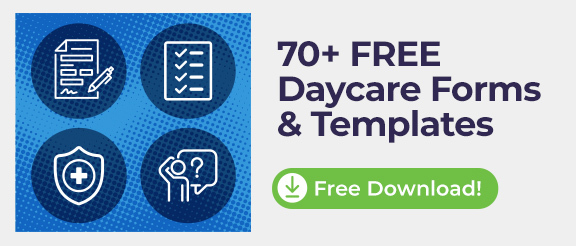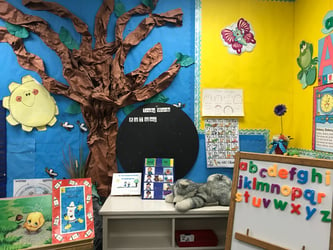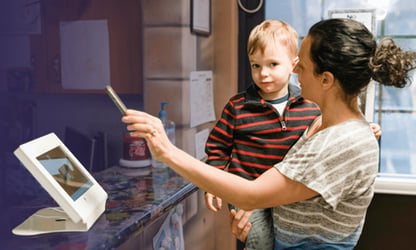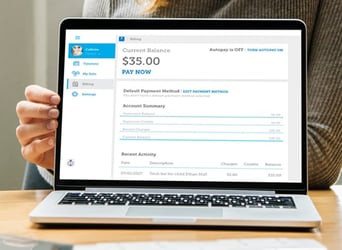Childcare centers are generally safe and dependable environments, but to maintain these environments, centers must require childcare emergency forms. A childcare emergency form is a necessary tool any childcare facility must have on hand.
A daycare emergency contact form contains all the important information on each child in a daycare setting or childcare facility. Most importantly, it contains any pertinent contact information for the parents or guardians of each child at the center.
If you want to learn more about childcare emergency contact forms and their uses, this guide can help you. Keep reading for further information.
Table of Contents
-
What Are Childcare Emergency Forms and When Should You Use Them?
-
Tailor Each Childcare Emergency Form for Different Emergencies
What Are Childcare Emergency Forms and When Should You Use Them?
Daycares can be a haven for busy working parents who need professionals to watch their children during the day. In fact, 58% of working parents in the U.S. depend on some form of childcare for their children.
In the event of a serious illness or injury, daycares use emergency contact information to contact parents or guardians to come and get their children from the center. However, if a serious medical issue occurs, a daycare emergency contact form can also grant the daycare center consent. It gives them the authorization to get the child immediate medical care before the parent arrives.
Why Are Childcare Emergency Forms Necessary?
Daycare staff should communicate with parents on a consistent basis; however, a childcare emergency contact form is part of a more extensive arsenal of childcare forms. It helps childcare organizations create a plan of action for the children in their care. An emergency form for daycare providers ensures preparedness for multiple types of incidents because they:
- Allow prompt access to each child's contacts
- Reduce stress on daycare workers
- Alleviate additional trauma on children and staff
All the contact information is readily available at a moment's notice, enabling daycare workers to easily navigate the daily complexities of operating a childcare center.
What Information Goes on a Childcare Emergency Form?
Emergency daycare forms must feature key information to be as useful as possible. When creating an emergency contact form, always include these five types of information.
Child's Information
One of the most important aspects of an emergency contact form is the child's information You should include the child’s name and date of birth first. List the child’s current age and weight. This can be helpful information when speaking to health care providers in a medical emergency.
Including a photo of each child with their emergency contact forms can also be helpful for identification.
Child's Medical information
Illnesses and allergies are common reasons for daycare emergencies. That's why it's crucial for a day care emergency contact form to have any information on the child's health conditions. Make a special note if the child has any medications like an inhaler.
Peanut allergies are one of the top food allergies in children. Approximately 25% of children in the U.S. with food allergies have a peanut allergy. Make sure you have EpiPens on hand and the proper training to administer them if a child suffers a peanut allergy attack.
Parent or Legal Guardian Contact Information
This section is for information relating to a child’s parents or legal guardians. List the names and phone numbers of any adult with legal custody of the child.
Ask parents to list all of the relevant phone numbers available. This includes any applicable work phone numbers.
Authorized Additional Emergency Contacts Information
If parents are not available to pick up their children during the day, they must have backups on file. This section is for listing additional names and phone numbers for a child's emergency contacts.
Ask for authorization to contact backups in an emergency if you are unable to reach the parents for any reason.
Physician Contact Information
It's always helpful to include a section on your emergency forms for daycare for each child’s physician’s name and contact information. This allows daycare staff to call the office directly with any medical questions.
Make sure parents sign a consent form with their child's physician's office that allows them to share information with the daycare center.
Properly Store and Copy Each Childcare Emergency Form
Always make copies of your childcare emergency contact forms. It's important to have both digital copies and hard copies. You should also have these copies in multiple places.
If your daycare facility is damaged by fire, flood or earthquake, you need to be able to access your childcare emergency forms in another way. Having a designated emergency contact notebook in your center makes it easy to grab it and go in an evacuation.
If you use a dedicated childcare management system, you can access these forms remotely from a mobile device. A childcare management system will let you keep multiple backup copies of your emergency contact forms.
Familiarize yourself with the electronic form and filing system features beforehand. You should carry out drills to prepare before an emergency happens. During emergencies, every second counts.
You must also ensure that daycare emergency contact forms are conveniently accessible to all daycare center staff. If your daycare forms aren't accessible during an emergency, it can delay finding the necessary information.
Depending on the nature of the emergency, your communication approach must be adaptable. You must adequately meet the needs of the children and staff, as well as parents. By making your emergency contact forms available in multiple locations, your childcare staff can use them in stressful and urgent situations.
Tailor Each Childcare Emergency Form for Different Emergencies
Different emergency scenarios require different approaches. Working with children who are away from their parents creates unique challenges. Every childcare center could potentially face various emergencies such as:
- Sick children
- Accidents and injuries
- Medical issues like asthma and allergies
- Inclement weather (fires, floods, earthquakes, tornados)
- Carbon monoxide alarm alerts
Each situation requires a unique response. Start by assessing the likelihood of certain emergencies at your childcare facility. Then plan accordingly for each possible scenario.
Next, create an emergency team within your center. Give each staff member a particular task in an emergency so the process runs smoothly. These positions could include taking a head count or contacting emergency services.
Using Emergency Mass Messaging
Some emergencies may not require the use of a childcare emergency form to make phone calls for every child. In the case of a widespread illness or natural disaster, you can send a mass text or email message blast to the remaining families to inform them of the situation. If it ends up being a false alarm, an emergency message will help keep parents informed and updated.
For center-wide emergencies, you will need to relay certain details about the nature of the emergency and other important information to parents. The American Academy of Pediatrics (AAP) recommends sharing this information:
- The type of emergency and any actions taken
- The current status
- If all the children have been accounted for
- The current location, if evacuated from the center
- When, where and if it’s safe for parents to come pick up their children
- What parents should bring when they are reunited with their children (photo ID, dry clothes, supplies)
The AAP strongly recommends that you provide information as it becomes available. Do not engage in unnecessary speculation about the scenario. Follow up with ongoing additional fact-based updates.
Communicate with Emergency Contacts Post-Emergency
While your first instinct may be to contact parents immediately, you must take other steps first. In any childcare-based emergency, the prime focus is getting the children out of danger.
Depending on the danger involved and the nature of the emergency, you should first focus on:
- Administering any necessary first aid
- Safely evacuating the classroom or building
- Calling 911 or other proper emergency services
- Going to a specified location to shelter in place
Again, assigning emergency tasks to different center workers is key. It will spread the burden of undertaking an emergency situation.
The U.S. Department of Health and Human Services (HHS) recommends designating a person who will reach out to each child’s emergency contacts listed on their childcare emergency contact form. This step should be done only after all the necessary first steps have been taken to ensure the safety of the children involved.
In some circumstances, you might need to contact parents while determining if a child requires any potential emergency services. Calling for medical assistance may require you to contact the child's emergency contact(s). Falls are the most common type of injury among young children with 8,000 children requiring emergency care every day.
HHS provides many resources for early childhood programs to help you develop an appropriate emergency plan. Depending on where you live, your state or province may also have helpful emergency guides.
Use Multiple Lines of Communication
During natural disaster emergencies, effective communication may become an issue. The power may fail or the phone lines could go down. Without power, the internet may also go down.
You'll need to find other ways to communicate. Among the alternatives you should consider for your emergency preparedness plan are:
- Your childcare center's social media accounts
- Mass text and childcare center communication apps
- Local online parenting groups that feature your childcare center
- Outgoing voicemail messaging services to send alerts to parents
Inform your childcare staff of any alternative ways to appropriately alert emergency contacts. Share any social media log-in information with your staff in case cell phones get left behind.
If the power outage is localized, find the closest publicly available computers with power and access to Wi-Fi connections.
Make sure you have an emergency kit containing the necessary emergency supplies that staff members can grab quickly. Ensure all staff members have extra cell phone chargers or power banks ready to go.
Keeping children safe in a childcare setting is paramount. Following proper safety protocols and using childcare emergency forms allows daycare staff to do this successfully.
Free Childcare Emergency Contact Form Template
According to the CDC, there are as many as 130 million emergency visits to hospital emergency rooms annually. Of that number, 16.2 million visits ended in hospital admissions.
As a daycare owner, it's your job to ensure you have the correct information so you can act swiftly in an emergency. Contacting parents is the first action you should take.
If you're looking to add a daycare emergency contact form to your registration papers, keep reading. You can use one of our templates to get started.
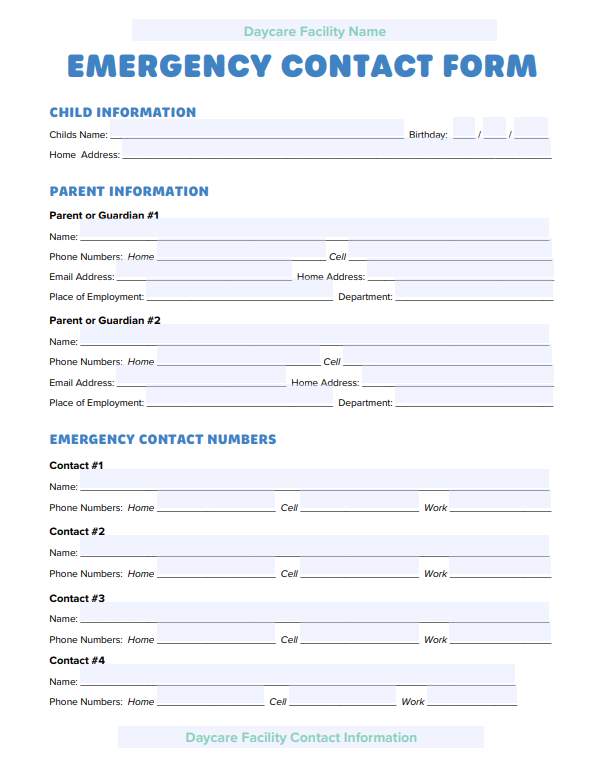
Childcare Emergency Contact Information Copy
If you would like the text to build your own childcare emergency contact form, you can copy and paste the copy below.
Child Information:
Child's Name:
Birthdate:
Home Address:
Parent #1 Information:
Parent or Guardian's Name:
Contact Numbers (Home and Cell):
Email Address:
Home Address:
Place of Employment:
Department:
Parent #2 Information:
Parent or Guardian's Name:
Contact Numbers (Home and Cell):
Email Address:
Home Address:
Place of Employment:
Department:
Emergency Contact Numbers:
Emergency Contact #1:
Telephone Numbers (Home, Work and Cell)
Emergency Contact #2:
Telephone Numbers (Home, Work and Cell)
Authorized Pickup Persons
#1 Name and Contact Number:
#2 Name and Contact Number:
#3 Name and Contact Number:
#4 Name and Contact Number:
Note to Parents: [Daycare Name] must have written permission for anyone other than parent/guardian to pick child up from the center.
Child's Medical Information
Physician's Name:
Contact Number(s):
Address:
Preferred Hospital:
Dentist's Name:
Contact Number(s):
Address:
Special Conditions, Disabilities, Allergies or Medical Information for Emergency Situations:
Health Insurance Information
Name of Insurance Company:
Insurance Plan:
Certificate Number (or ID):
Group No.:
Policyholder's Name:
Parent/Legal Guardian Consent and Agreement for Emergencies
As a parent/guardian, I authorize facility staff to administer first aid to my child and to transport my child to a hospital if necessary. In the event that the charges are not covered by insurance, I will be responsible for them. [If any changes occur/At least once a year], I agree to review and update this information.
Date:
Parent/Guardian #1 Signature:
Parent/Guardian #2 Signature:
Reviews
Review Date:
Review Date:
Review Date:
Get 70+ Editable Daycare Templates for Almost Every Situation
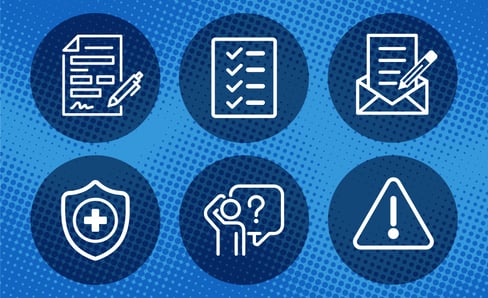 We know daycare providers like yourself are busy. That's why we made dozens of templates to help you manage the various aspects of your organization. From billing and invoicing to marketing materials, we have it all. Download all 70 today!
We know daycare providers like yourself are busy. That's why we made dozens of templates to help you manage the various aspects of your organization. From billing and invoicing to marketing materials, we have it all. Download all 70 today!


